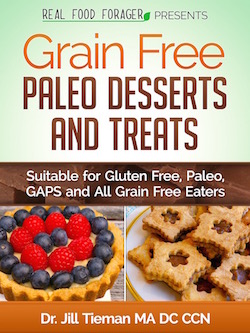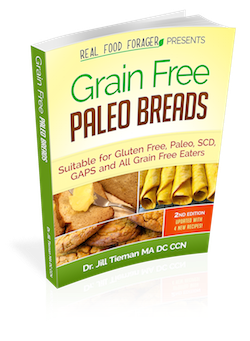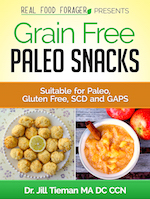It may feel overwhelming when you look at the whole foods, real foods and the Weston Price Foundation (WAPF) recommended approach to improving your health. You will notice that almost everything is home cooked, starting from scratch. There are more steps involved in preparing foods, for example, soaking nuts and grains (if you eat them) before use. Furthermore, there are foods mentioned that you never even heard of or were informed are bad for you. This is all true.
Years ago, I taught a class called Healthier Food Choices in which I spoke about how, for example, conventional packaged food ingredients were bad and how one could make a healthier food choice by choosing a food with similar but healthier ingredients from the health food store!
I have traveled a long distance since then. Now, I simply council people to stop buying packaged foods entirely and to start making their own meals from real food. There is no longer any need to read food labels, because I no longer buy foods that requires a label. If there is more than one or two simple ingredients it goes back on the shelf.
Whether I am in a Whole Foods or any conventional grocery store, I shop the perimeter where the fresh produce and meat counters are located. Of course, the best way to shop is to buy directly from your local farmer through a buyer’s club and to support your local organic farmer by joining a CSA (community supported agriculture). But we are getting way ahead of ourselves here.
Crawl Before You Walk
Before you take your first steps, you need to crawl a little. So the very first action to take is to start to become familiar with the basics. Visit the Weston Price Foundation website. Follow the links provided here. Read Nutrition and Physical Degeneration, the book that presents the work of the brilliant Dr. Weston Price.
Read this blog and other real food blogs. You cannot expect to do and learn everything all at once. The logical approach is to take one small step at a time. As you are reading and educating yourself about real foods, you can make small goals for yourself, such as, changing one food item a week or even a month.
First Step is Fats
The first step should address the important issue of fats. Which fats should you eat? Get rid of all the conventional vegetable oils, margarine and trans fats like Crisco in your kitchen. By the way, Crisco stands for crystallized cottonseed oil, definitely something you do not want to eat! Instead, buy organic extra virgin olive oil for salads, unrefined sesame oil, coconut oil and butter or ghee for cooking and baking. Use duck and goose fat, and get some lard and tallow from a supplier of grassfed beef for high heat cooking.
Conventional vegetable oils are really bad for you, including, and especially soy and canola oil.These two oils in particular are worse than other vegetable oils as they are part of the genetically modified “four”: soy, corn, cottonseed and canola.
Unfortunately, they are pervasive in our food supply. They are in all salad dressings, lots of baked goods and other packaged foods. We just don’t know how eating genetically modified foods will affect our health over time. See more about genetically modification at my past post. There will be a lot more about fats in upcoming blogs!
The Second Step is Sugar
The second step you take should involves the issue of sugar. Americans have too many sugars in the diet. Sugar is disguised in many forms and is hidden in all packaged foods. It can even be found in frozen vegetables!
Refined sugar is empty of nutrients , high in calories and highly addictive. Sugar appears as sucrose, dextrose, maltose,white sugar, corn syrup, high fructose corn syrup and fructose. Avoid these additives to your food as they bring the blood sugar up very rapidly, cause an insulin surge and then a crash.
These products and all artificial sweeteners are highly addictive which makes refraining from them difficult. But the longer you stay away, the less craving you will have. You may replace these manufactured products with cautious use of natural sweeteners such as honey and maple syrup, or rapadura which is unrefined cane sugar. At least these have trace minerals and other nutrients. However these natural sweeteners should also be limited.
There is a huge learning curve when it comes to changing your food choices. But once you learn something new, it becomes very easy to implement. There is a lot of misinformation out there. The Weston Price Foundation recommendations are based upon the wise traditions of our ancestors, which have been proven over and over to support vibrant health.














